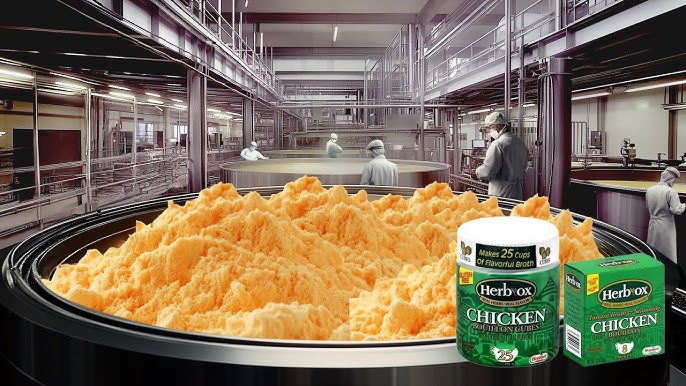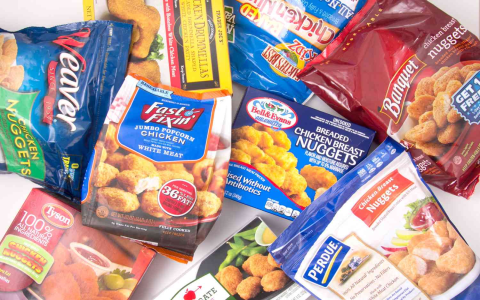So, you ever look at a packet of instant noodles, or like, a bouillon cube, and see “artificial chicken flavour” and just kinda wonder what the heck is in that stuff? Yeah, me too. I actually went down a bit of a rabbit hole with this one a while back, and lemme tell ya, it was an eye-opener.
It all kicked off when I was trying to make this killer chicken-less soup for my buddy. He’d just gone veggie but was seriously missing that savory chicken taste. I figured, “Easy, I’ll just grab some of that chicken flavour powder.” I thought it was, you know, mostly dried chicken or something super simple. Man, was I off base.

The Ingredient List Investigation
First thing I did was grab a bunch of different products that boasted “chicken flavour.” We’re talking seasoning packets from noodles, those little stock cubes, even some snack foods. I flipped ’em all over to the back. And that’s where the fun began. Not fun, actually. More like, confusing.
The ingredient lists were wild. Hardly any of them just said “chicken.” Instead, I saw stuff like:
- Monosodium glutamate (MSG): Okay, knew that one. Makes things taste more savory. No big shocker there.
- Disodium inosinate & Disodium guanylate: Now these sounded serious. Like, straight out of a science textbook. Turns out, they’re flavour enhancers too, often used with MSG to make things taste even MORE savory, or “umami” as fancy folks call it.
- Yeast extract: This popped up a lot. It’s got that meaty, brothy kind of taste. So that makes sense.
- Hydrolyzed vegetable protein (HVP) or soy protein: Sneaky! This stuff can be processed to taste kinda like meat broth.
- Sugars (like dextrose, maltodextrin): Not just for sweetness, apparently. They can help with browning reactions or balance other flavours.
- And then the big one: “Artificial Flavours” or “Natural and Artificial Flavours” or sometimes just “Flavouring”. Super vague, right?
Sometimes, way down the list, you might see “dehydrated chicken meat” or “chicken fat.” But often, it was a tiny amount, or not there at all, especially in the cheaper stuff. It felt like a magic trick, making something taste like chicken with barely any chicken involved.
So, What IS Artificial Chicken Flavour, Then?
So, I started digging around a bit more, just reading up on what people say, you know, general chatter, not like super scientific papers or anything. What I gathered is that “artificial chicken flavour” isn’t one single thing. It’s a whole cocktail of different chemical compounds, all mixed together to trick your taste buds and nose into thinking “CHICKEN!”
Think of it like this: real cooked chicken has a super complex flavour profile, made up of hundreds of different compounds. These food scientists, they try to pick out the key ones that scream “chicken” and then recreate them in a lab or extract them from other sources. We’re talking about things that give it that roasted smell, that savory taste, that slightly fatty mouthfeel. It’s a blend of stuff, some to make it savory, some for aroma, some for other subtle notes.
It’s kinda like a painter mixing colors to get the perfect shade. Except here, they’re mixing chemicals to get the perfect chicken-y illusion. Some of the actual chemical names I saw mentioned were crazy, things like aldehydes and ketones. Way over my head, but it just showed me how complex it is.
It’s not like they just grind up a chicken and dehydrate it for these artificial versions. Nah, it’s more like building chicken flavour from tiny Lego blocks, and many of those blocks aren’t even from a chicken originally. It’s a whole science, and frankly, a bit of an art form, I guess. They’re trying to mimic something very specific, and they use a whole toolbox of ingredients to do it.

My Takeaway From All This
Honestly, after all that, I was pretty surprised. And a little bit like, “Huh. So that’s how they do it.” My grand plan to whip up a super authentic chicken-less chicken broth using some magic powder? Yeah, that didn’t quite pan out because there’s no single “magic powder” that is artificial chicken flavour. It’s the whole combo in the product itself.
It made me realize that “flavour” on an ingredient list can mean a whole lot of different things, often a very engineered mix. I still use products with artificial chicken flavour sometimes, no doubt. They’re quick, they’re easy, and sometimes they just hit the spot. But now, when I see “artificial chicken flavour,” I have a bit more of an idea of the chemistry set that might be behind it. It’s less about the bird and more about the brains in the lab, piecing together an illusion. Kinda wild when you think about it.













